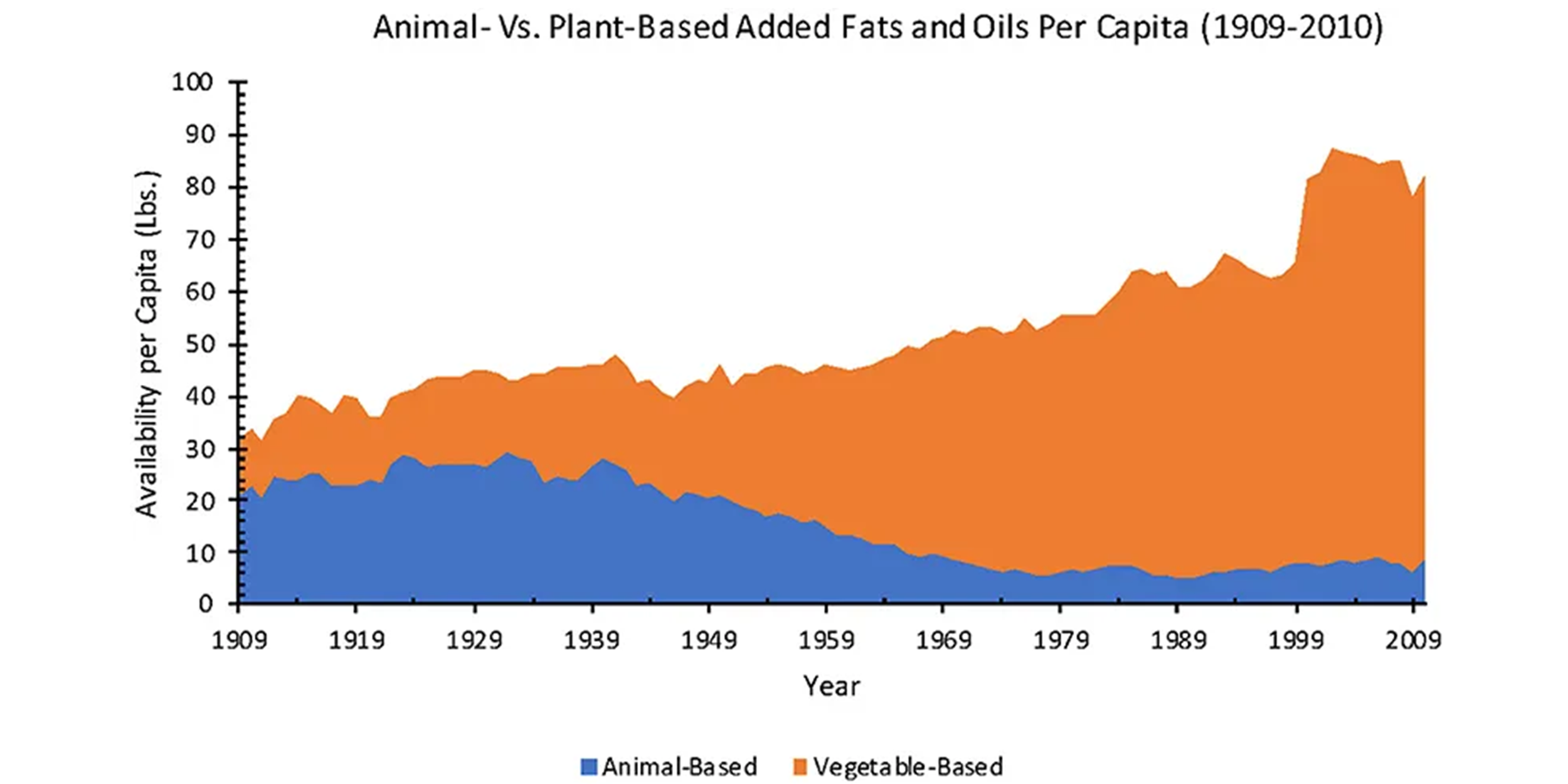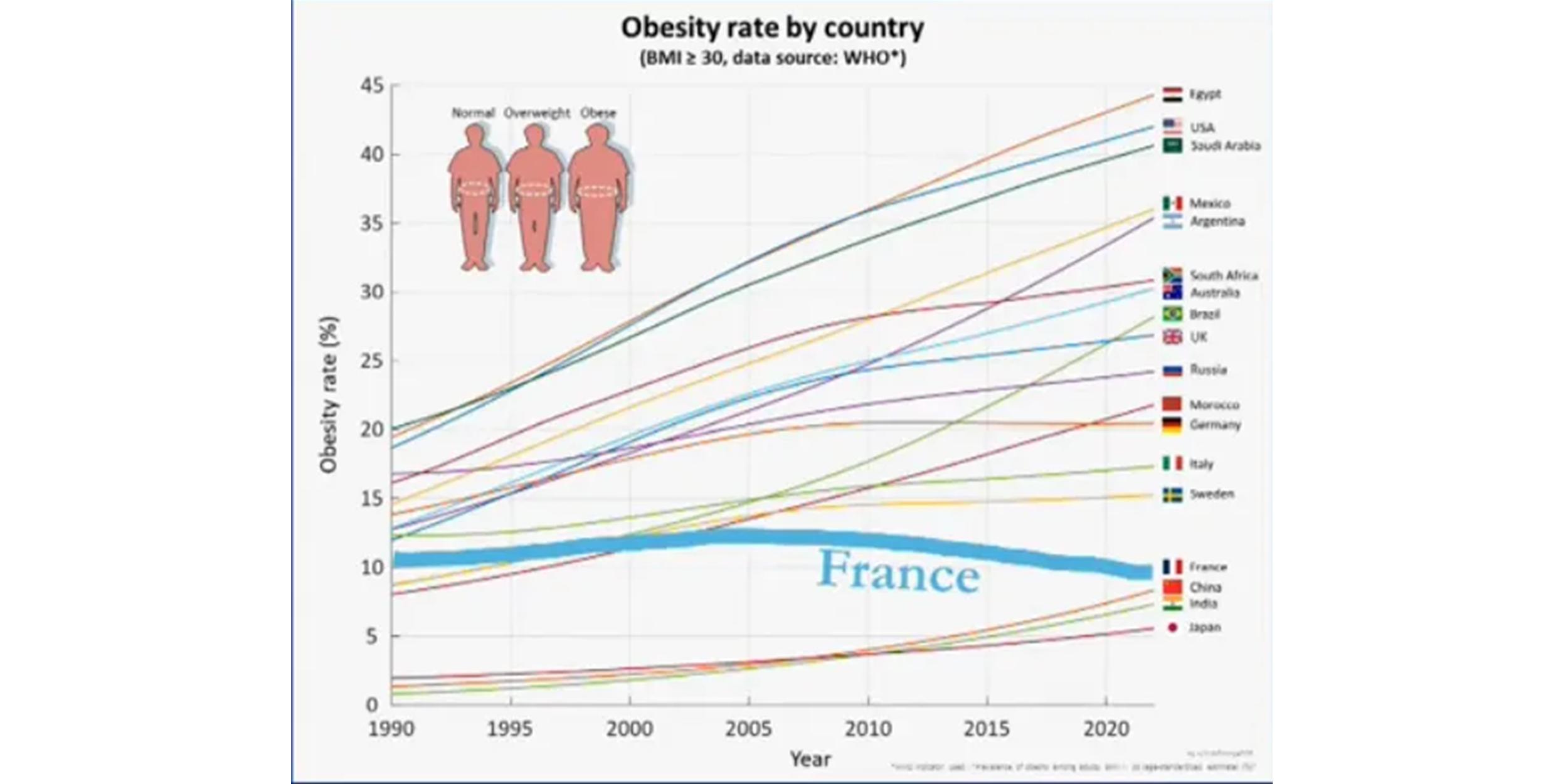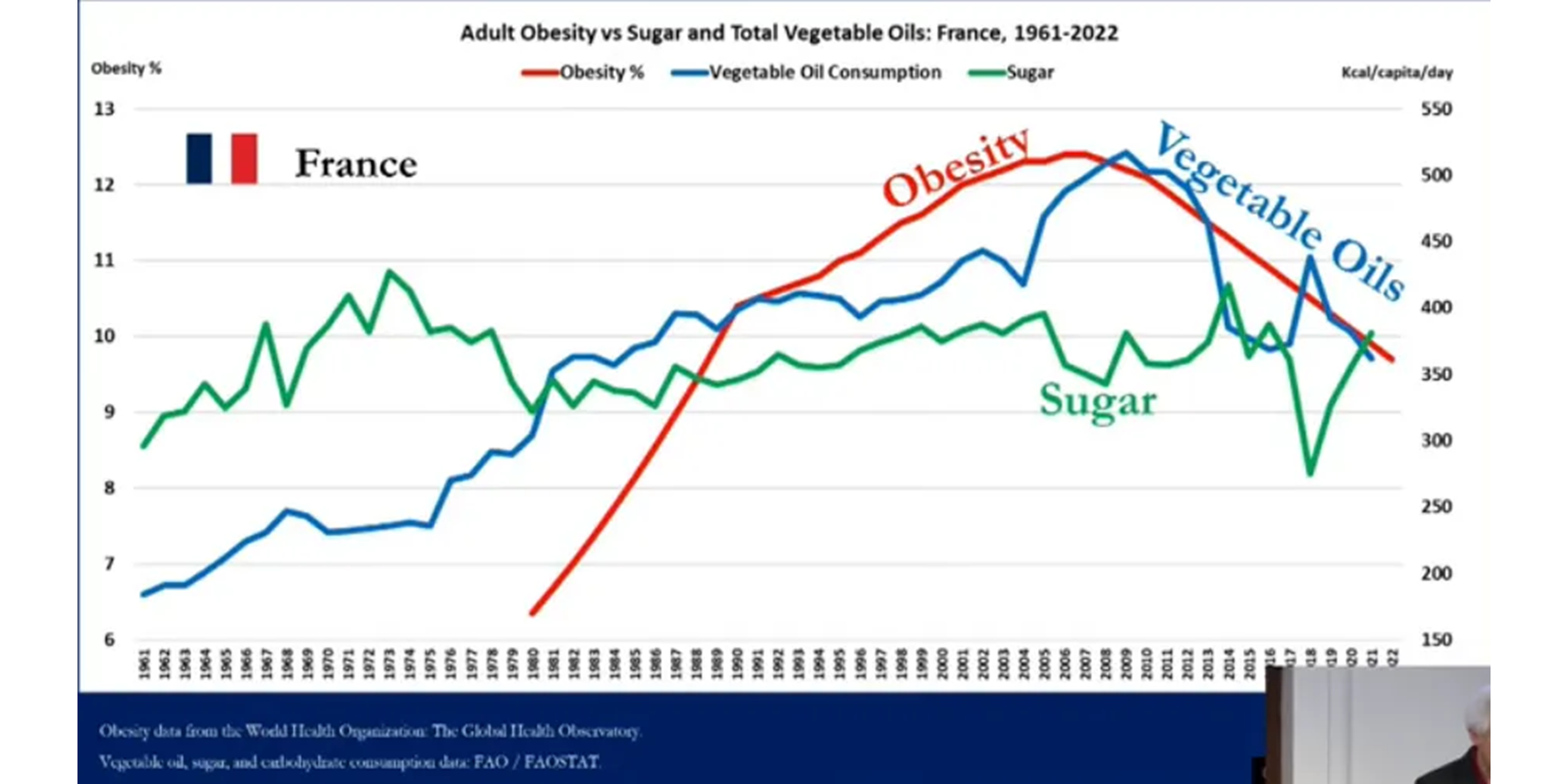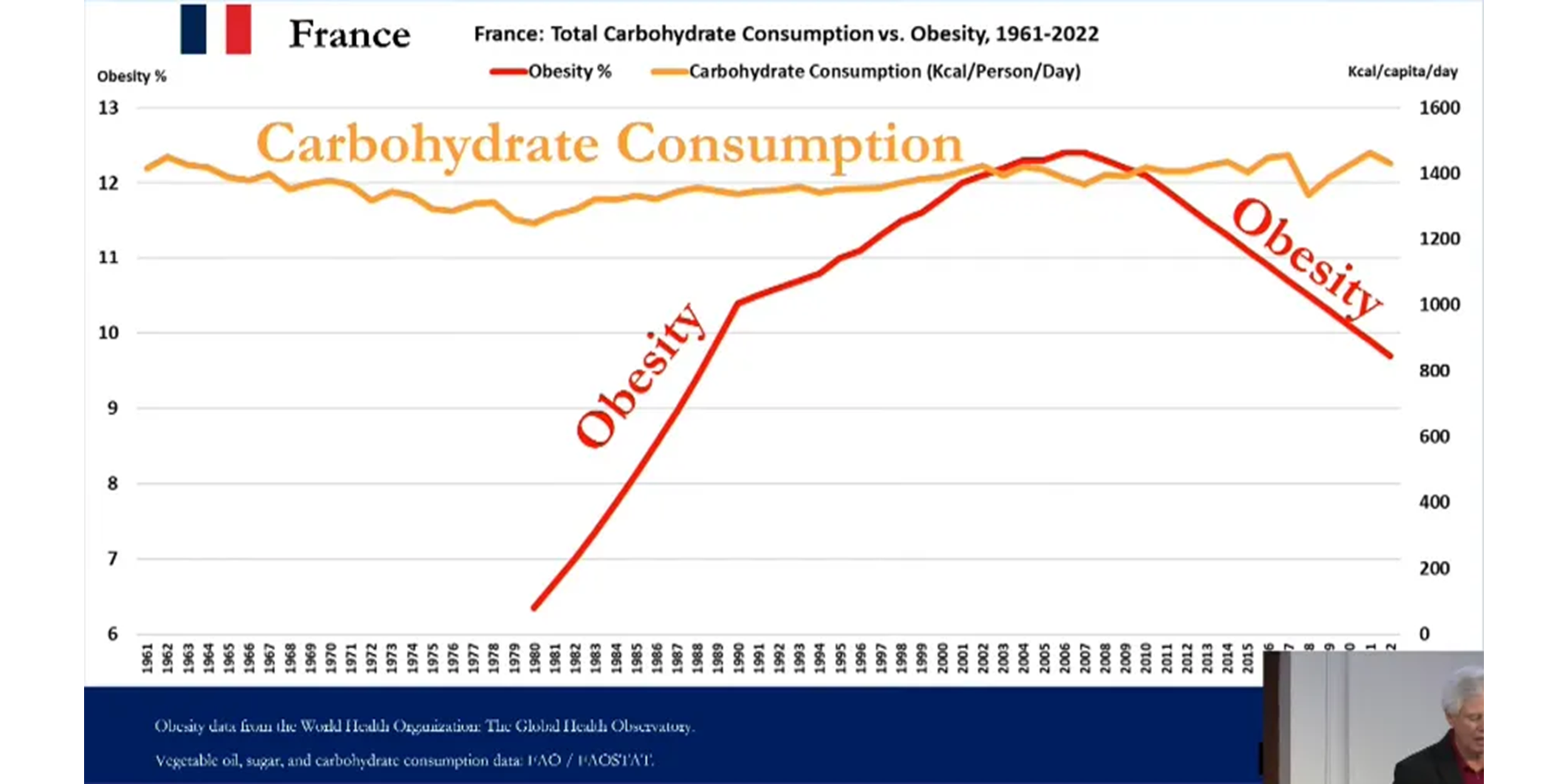Can rapeseed (Canola) oil cause obesity?
In a Nutshell
Temporal, geographic, animal, and mechanistic data point to industrial seed oils as under-recognised drivers of obesity
During 1990 - 2022, seed-oil calories rose 43% and obesity more than doubled
Linoleic acid (main ingredient) in seed oils causes fat gain in mice
In an ancestral world of food scarcity linoleic acid drove beneficial overeating; in today’s constant abundance it is non-stop fat storage switch
I first encountered the idea that rapeseed (Canola) oil contributed to the modern obesity epidemic in a 2025 talk by Chris Knoebe. At the time I didn’t write about it - the topic felt too new, and I prefer to see something more than once before taking it seriously. Recently I stumbled across his thesis again and decided it was worth laying out here.
Two questions:
When did modern obesity rates start to rise sharply?
Could the main ingredient in rapeseed (canola) oil - linoleic acid - be a driver of obesity?
When Did Obesity Rates Begin Rising Sharply?
If a suspect appears on the scene as crime rates spikes, investigators take notice. Data and figures sourced from Chris Knoebe (presented by Nick Jikomes) tell a consistent story.
Plant-based oils and fats overtook animal fats in per-capita availability in the early 1900s and have dominated ever since (Figure 1).
Figure 1: Availability of plant-based versus animal-based oils and fats
Jikomes describes the growth in plant-based oils and fats in three phases as follows:
“…seed oil consumption started in the 1800s with cottonseed oil. Consumption rates increased after the introduction of Crisco in the 1910s. After WWII, the country was really booming: mass marketing and adoption of seed oils really took off.”
Availability of plant-based oils and fats has grown substantially and now greatly exceeds what’s available from animals. That doesn’t in itself help us understand if that growth is also associated with growth in human obesity. For that, we turn to Figure 2.
Figure 2: Average adult rates of obesity and Type 2 Diabetes derived from a study of 17 countries compared to daily amounts of energy derived from sugar and vegetable oils
A 17-country analysis (1990–2022) is revealing (Figure 2):
Daily calories from sugar stayed roughly flat for two decades, rose slightly, then fell back below 1990 levels by 2022
Daily calories from vegetable oils rose steadily from ~315 kcal to nearly 450 kcal - a 43% increase in one generation
Over the same period, the rate of adult obesity roughly doubled from 12% to almost 26% (a 117% relative increase), while type 2 diabetes tracked the same trajectory
Sugar consumption did not correlate with obesity. Seed oil consumption correlated well.
Country-by-country data (Figure 3) show obesity rising everywhere except France - the one country where vegetable-oil consumption peaked around 2007 and then declined (Figure 4). French obesity rates also stopped rising around 2005–2006. Carbohydrates (including sugar) showed no such pattern (Figure 5). Correlation ≠ causation, of course. However, the correlation here is pretty good, and appears stronger than that simply blamed on sugar or total carbohydrates.
Figure 3: Individual country rates of obesity between 1990 and 2022
Figure 4: Changes in rates of French obesity compared to consumption of sugar and vegetable oils
Figure 5: Changes in rates of French obesity compared to consumption of carbohydrates and vegetable oils
Does the main ingredient in rapeseed (canola) oil cause obesity?
What is the main ingredient in rapeseed (canola) oil?
The main ingredient is called linoleic acid. I’ve written about this before in my main article on seed oils. Linoleic acid occurs naturally and we consume it when we eat real food. The problem arises when we raise the concentration well above what is found in nature. This is what happens when we use industrial processing to create seed oils.
The following section comes largely from my original article.
How does Linoleic acid become poisonously concentrated in modern food?
Seed oils are created through a multi-step industrial manufacturing process. The initial steps take place once the seed oil crop enters the factory where they undergo sterilization, stripping, extraction, and purification creating crude seed oil. The crude oil then undergoes a chemical or physical refining process. The resulting refined oil with very high amounts of linoleic acid is used as an ingredient in processed food or sold directly to consumers for cooking.
The seed oil end-product of the industrial manufacturing process is chemically very different from the linoleic acid present naturally in real food. Consider the following:
The amount of linoleic acid can be as high as 70-fold greater than in real food
They contain none of the anti-oxidants produced in nature to protect us from linoleic acid oxidation
They contain no fat soluble vitamins (e.g., vitamins A, D3, E, and K2) we’d expect in nature
Seed oils, therefore, are biologically un-natural and act as a delivery vehicle exposing us to harmful levels of linoleic acid without any of the protection and nutrition we’d expect from real food.
If you read my original article I say more about seed oils generally and how they contributed to my heart disease. But what about obesity?
Does linoleic acid cause obesity?
For this section I drew from another article by Nick Jikomes. By way of a general warning, Jikomes discussed studies in mice, not humans, and draws attention to the low quality of nutrition literature that I have also encountered. He writes:
“As usual, the researchers do not provide a detailed description of the specific diets they used. Part of my job is to slog through this crap for you, so we can actually see what the hell we’re dealing with.”
Jikomes summarises a series of studies in mice as follows:
“The studies…illustrate what happens when the linoleic acid content of animal diets varies: more linoleic acid leads to more weight gain.”
He provides an important caution when trying to compare studies in mice with those in humans:
“Remember, metabolism scales non-linearly with body size. 10-14 weeks of “mouse time” equates to more than ten years of “human time” (the specific answer depends on how you do the math). In other words, if a human clinical trial controlling diet this precisely (rarely done) wanted to detect a similar effect, it would have to run continuously for over a decade, maintaining proper dietary control the entire time. Such a trial not feasible for most researchers to pull off or even attempt.”
These studies show associations between linoleic acid exposure and obesity. They don’t show causation, largely because no mechanism is apparent.
Is there a mechanism to show how linoleic acid causes obesity?
For this section, I’m drawing on a third article by Jikomes. He describes how linoleic acid acts through an evolved mechanism that causes us to eat whenever we see food. This mechanism involves our internal cannabinoid (endocannabinoid) system. If you’ve ever experienced the munchies after a session with cannabis, you’ll understand how this works…!
Anyway, the thesis goes along the lines that linoleic acid causes us to eat when we find food. This makes sense in our evolutionary past when our ancestors encountered winters and other long periods without plentiful food (e.g., drought-related famines). A system which causes constant eating resulted in fat stores for the lean times, whereas a system that induces us to eat only when hungry could mean starvation during winter or drought.
“…across species, animals that only eat when they’re truly in need of energy won’t have much stored up. Animals that always indulge when something is in front of them will generally store up more energy in the form of body fat.”
This made sense as our species evolved:
“As with any other wild animal, this was a great strategy for human beings, throughout most of evolutionary history. Our endocannabinoid system helped keep us motivated to find tasty, energy-dense foods at more or less all times.”
But here’s the rub:
“Food scarcity is generally not an issue for modern humans. In fact, we are faced with the opposite problem today: food is readily available, everywhere we go, throughout life. People living in relative poverty, including the homeless, are more likely to be obese than they are to be starving.”
Consider Figure 6. For 99.9% of human history the endocannabinoid strategy worked well. Brain size increased, body size increased, and starvation was kept at bay. Agriculture (starting ~10,000 years ago) began eroding that evolutionary match and modern human stature began to decline. The industrial food era of the last 150 years - including the tsunami of refined seed oils since the 1970s - shattered the evolutionary match completely. Today food is rarely scarce, yet our endocannabinoid system is being constantly stimulated by unprecedented linoleic-acid exposure. The evolutionary “eat everything in sight” signal never turns off.
Figure 6: Humans and our ancestors adapted to an environment of energy scarcity and evolved behavioural mechanisms to increase the chances of survival
Summary
We don’t have decades-long, human randomised clinical trials (RCT, when well designed, represent the best way to investigate correlations in humans) proving that seed oils cause obesity – and likely never will. However, the indirect evidence is substantial:
Temporal and geographic correlation between seed-oil consumption and obesity
Consistent rodent data showing dose-dependent fat gain from linoleic acid
A plausible mechanism linking linoleic acid and the human endocannabinoid system as an ancestral adaptation to variable availability of food
An explanation of how our ancestral adaptation is unhealthy in a modern environment exposing us to high levels of linoleic acid and plentiful food
Personally, I find the preponderance of evidence compelling. Industrial seed oils - including rapeseed (canola) - appear to be major, under-appreciated drivers of the obesity epidemic.
They cause an evolutionary mismatch and belong on the same causal list as starches and ultra-processed carbohydrates, not beside butter, olive oil, or beef tallow. We have removed seed oils from our kitchen and do our best to avoid them elsewhere.
Data referenced in the text can be found in Nick Jikomes’ articles and Chris Knoebe’s presentation.






